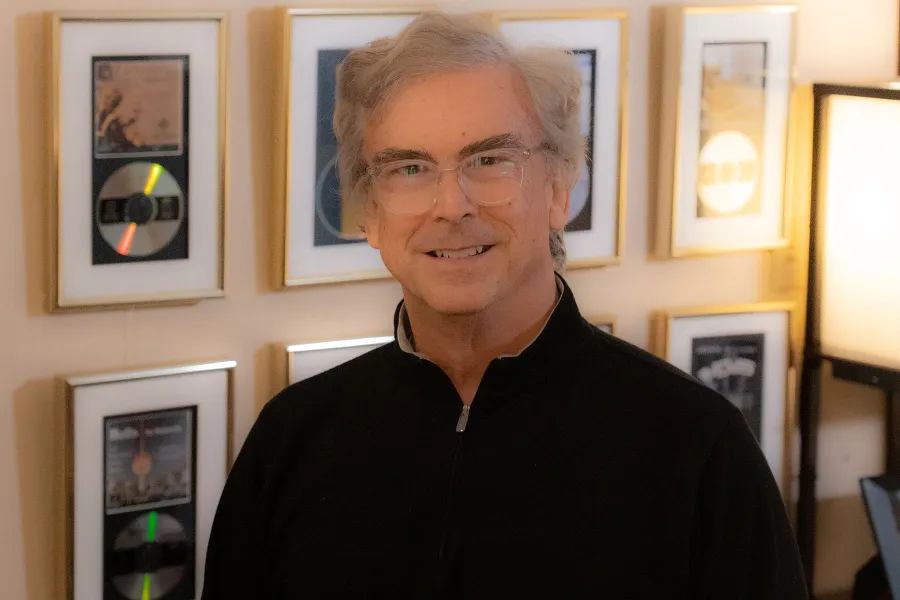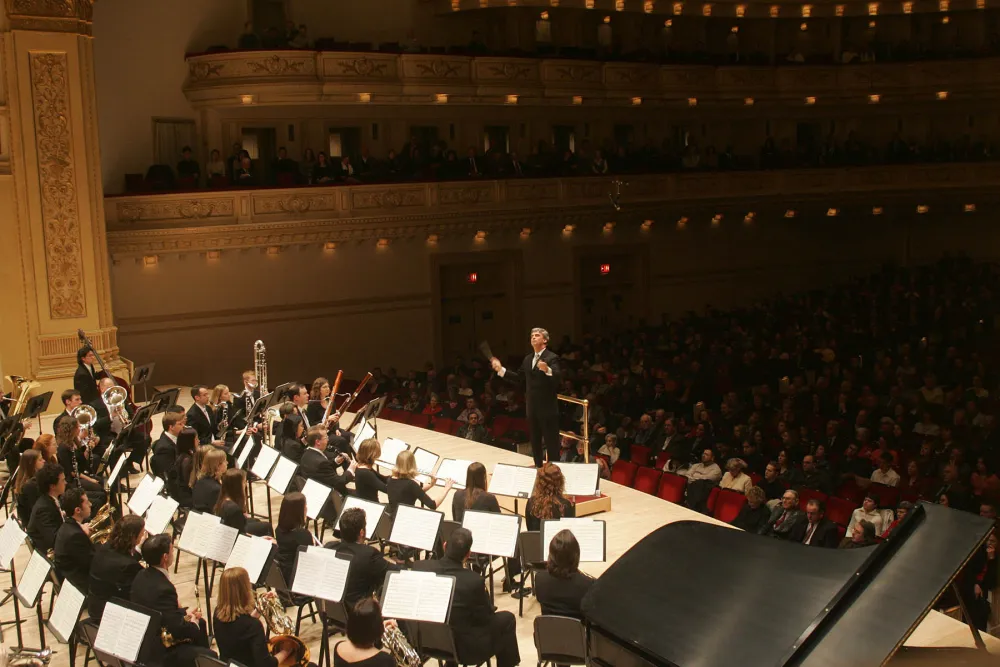May 14, 2024

At Carnegie Hall, on June 2nd, the Texas Wind Ensemble, under the baton of Wind Ensemble conductor Jerry Junkin, will take the stage. For 35 years, Junkin has led the Texas Wind Ensemble, a cornerstone of musical excellence. His leadership extends globally, serving as Music Director and Conductor of the Hong Kong Wind Philharmonia since 2003, Artistic Director and Conductor of the Dallas Winds since 1993, and as a Visiting Professor at the Senzoku Gakuen College of Music Wind Ensemble in Tokyo, Japan since 1993. Yet, amidst these accolades, Junkin remains resolutely forward-looking.
Junkin's journey reflects a shifting landscape in musical perception. When he began his career, the wind ensemble's prominence was not assured. Despite the Butler School of Music's century-old legacy, it had only embraced the wind ensemble concept for fifty years. Wind bands often lingered in the shadow of symphony orchestras, relegated to secondary status. Even Junkin's position took three years before the school initiated a propper search, emblematic of the era's attitudes toward band music.
End of an Era
In the late 19th century, the United States boasted a vibrant band movement, with as many as 10,000 active bands, reflecting a musical landscape where band music reigned supreme. Figures like John Philip Sousa commanded widespread admiration, akin to today's rock stars. Bands filled public spaces, from factories to amusement parks, providing a soundtrack to daily life (Harding, 1916).

John Philip Sousa in Concert during the Heyday of the Band Movement (Courtesy of the Library of Congress)
However, by the 1920s, the band movement had dwindled, overshadowed by the allure of jazz, automobiles, and movies. Instrument sales plummeted, and interest waned, exacerbated by challenges such as non-standardized instrumentation and a scarcity of compositions.
David Whitwell observed that in 1938 the majority of suggested programs for mature student bands consisted of between 85% and 88% transcriptions of mainly symphonic music (Whitwell, 1985). While there were efforts to revitalize the movement, including the standardization of instrumentation and the employment of military veterans to teach band in schools, the movement as a whole was a mere shadow of what it had been in its heyday.
A New Era Begins
When the next group of band leaders like Jerry Junkin took their roles as bandleaders, they faced a pivotal decision: dwell on the past or embrace the future. While it might have been tempting to indulge in nostalgia and perform familiar tunes from bygone eras, they opted for innovation. Their commitment not only raised the bar for wind music but also attracted attention from esteemed composers. By the mid 1970s, a mere 27% of collegiate compositions performed were transcriptions, signaling a shift towards original works (Westbrook, 1978). That trend continues today with Junkin saying, "Composers are writing music, and I don’t mean educational level music, the most sophisticated composers of the day" highlighting that “high-level musicians who value the medium are now the norm”.
Junkin has worked tirelessly to establish the wind ensemble as one of the most respected in the world, organizing worldwide, European, and United States tours. While global travel exposes students to new standards, some of the most high-stakes concerts occur at professional band conferences where Junkin has taken the wind ensemble. There, students have the opportunity to listen to some of the greatest wind players worldwide (intimidating), and then turn right around and perform for them (super intimidating). All these efforts aim to elevate the wind ensemble's level, its players, and the art form as a whole.

Jerry Junkin conducting the Wind Ensemble in 2005 during a previous trip to Carnegie Hall
Through Junkin’s dedication, the Wind Ensemble has fostered growing respect for wind music, especially worldwide. Junkin cited Japan as an example, saying, "It’s just crazy… It is a much more valued thing to be in a band than an orchestra." When he conducts in Japan, groups of people wait after the concert to get an autograph or a picture. Once, a large group waited for an autograph or photo in the pouring rain while Junkin changed and chatted with the players. He reflected, "I had no idea that they would wait in the pouring rain; I really felt bad."
Looking Forward to Carnegie
While Junkin has been in his job for 35 years, he still looks to the future, not the past. When discussing his upcoming Carnegie Hall concert, his growth mindset comes into full focus. The concert begins with Shostakovich’s Festive Overture, composed in 1954 it is often thought of as a new or modern piece. In this concert it is the oldest piece by a staggering 47 years. Next is the world premiere of Biedenbender’s trumpet concerto River of Time for band. This is followed by Omar Thomas’ Of Our New Day Begun, written to honor the victims of the 2015 tragedy in Charleston, South Carolina. Then after intermission director of the Longhorn band, Cliff Croomes will conduct Donald Grantham’s 2001 piece Don’t You See, and John Mackey's 2014 Wine-Dark Sea closes the program. All composers (except Shostakovich) will be in the Carnegie Hall audience, an unusual occurrence in classical music outside of a "new work" concert or festival.
When asked about the Texas Wind Ensemble's 100th anniversary which will be 50 years from now, Junkin emphasizes the significance of public school music programs in shaping its future. Just as military veterans paved the way for leaders like Junkin to develop the art form, he believes that current and future teachers will elevate it further. While he maintains that "This is the best time there's ever been to be a band conductor," he trusts his students to raise the ensemble to new heights. Many Wind Ensemble members playing at Carnegie Hall are music education students who will soon lead public school music programs, a source of great pride for Junkin. It’s possible that some students who perform in this concert will teach those who will play in the 100th anniversary concert, perhaps the ultimate example of a futuristic mindset.
The concert will be at 2:00 p.m. at Carnegie Hall in the Isaac Stern Auditorium on the Ronald O. Perelman stage.
Sunday, June 2, 2024.
Tickets are available on the Carnegie Hall website.
40% off discount code for tickets: DIS44417
Harding, A. A. (1916). The band as a community asset. School and Home Education, 35, 336-338.
Whitwell, D. A Concise History of the Wind Band. Northridge, CA, 1985.
Westbrook, J. (1978). A paradox: The prestige of the band compared to the orchestra. The Instrumentalist, 33(2), 114-115.

